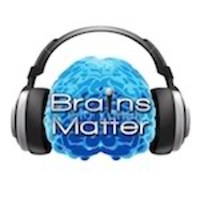Stem Cell Awareness Day
A public forum on Stem Cell Awareness is being run at Monash University on Thursday the 25th of September, 2008.
Details are as follows:
Date: Thursday 25/9/2008
Time: 9:30am – 5:30pm
Location: Robert Blackwood Hall, Monash University, Wellington Road, Clayton Victoria 3800, Australia
Further information: http://www.stemcellawarenessday.com
Stem cells have generated unprecedented excitement in medical research because of their potential to treat a wide range of the most devastating degenerative and induced diseases including those of the cardiac, nervous (including Alzheimer’s and Parkinson’s disease), vascular and respiratory systems, autoimmune diseases (such as multiple sclerosis, type 1 diabetes, rheumatoid arthritis, and lupus), immunodeficiency states, and cancer. Stem Cell therapies may also be useful to treat a wide range of sporting or other physical injuries, and may assist in the recovery from surgery. Stem cells have both human and veterinary applications. They are also the inspiration for a whole new generation of research scientists, astonishing technical breakthroughs and thriving commercial opportunities.
However, the enthusiasm for Stem Cell Research has been tempered by unrealistic promises and expectations, and significant confusion and controversy in the community, often due to inadequate public education, ethical concerns associated with the use of embryonic stem cells, and the perceived threat of human cloning. These concerns are contrasted with sensationalist stories of “miracle cures,†often in poorly regulated environments but still driving a thriving medical tourism industry, because of the desperate needs of many patients for a better quality of life.





February 12th, 2009 at 14:04
Will stemcell injections help Shy Dragers Syndrome??
March 3rd, 2009 at 19:48
Gay,
Here’s the response from Dr Lacham-Kaplan:
The Syndrome:
Multiple system atrophy with orthostatic hypotension is the current classification for a neurological disorder that was once called Shy-Drager syndrome. A progressive disorder of the central and autonomic nervous systems, it is characterized by orthostatic hypotension (an excessive drop in blood pressure when standing up) which causes dizziness or fainting. Multiple system atrophy can occur without orthostatic hypotension, but it is rare. Doctors classify the disorder into 3 types: the *Parkinsonian-type* includes symptoms of Parkinson’s disease such as slow movement, stiff muscles, and tremor; the *cerebellar-type*, which causes problems with coordination and speech; and the *combined-type*, which includes symptoms of both parkinsonism and cerebellar failure. Problems with urinary incontinence, constipation, and sexual impotence in men happen early in the course of the disease. Other symptoms include generalized weakness, double vision or other vision disturbances, difficulty breathing and swallowing, sleep disturbances, and decreased sweating. Because the disease resembles others, a correct diagnosis may take years.
Is there any treatment?
There is no cure for multiple system atrophy with orthostatic hypotension. Treatment is aimed at controlling symptoms. Anti-Parkinson medication such as Sinemet may improve the general sense of well-being. Medications to elevate blood pressure while standing are often used, but may cause high blood pressure when lying down. Individuals should sleep with the head of the bed elevated. An artificial feeding tube or breathing tube may be required for problems with swallowing and breathing.
What is the prognosis?
Most individuals with multiple system atrophy with orthostatic hypotension die within 7 to 10 years after the onset of symptoms. A problem with the respiratory system is the most common cause of death.
What research is being done?
The NINDS supports research on disorders of the autonomic nervous system, including multiple system atrophy with orthostatic hypotension. This research is aimed at developing techniques to diagnose, treat, and prevent these
I suggest the patient to look into the clinical trials supported by the NIH. I will try and get more information for you.
Best of wishes
Orly
July 21st, 2010 at 19:29
my brother has multiple system atrophy, he is a medical docter, tries his best to find out more about the illness.